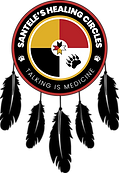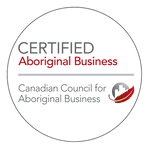INDIGENOUS CULTURAL TRAINING

What is it
In response to the national inquiry and collaborative truths shared by residential school survivors, the Canadian government negotiated an agreement that included the Truth and Reconciliation Commission of Canada [TRC]. The TRC contains 94 Calls to Action to be implemented by the Government of Canada. Truth is needed before reconciliation can happen. Truth in the form of education. The virtual Kairos blanket exercise is a powerfully engaging and interactive way to learn and experience truths that are integral to the reconciliation process.
Where and How
Reconciliation through Education
The key to reconciliation is education. Part of this education must involve truth – truth about our shared histories here on Turtle Island, also called Canada. We are all Treaty people. In order to respectfully adhere to the Treaties and to successfully live together in peace, friendship with mutual respect, we need a shared understanding of how our collective past brought us to where we are today. We need to know our past in order to fully understand the present to then know what our responsibilities are for future generations. Truthful education is just one step in this journey. It must also be followed by action.
How it Works
By means of a personal map drawing that represents one’s home, land and/or community, participants are guided through the historic and contemporary relationship between Indigenous and non-Indigenous peoples in the land now referred to as Canada also known as Turtle Island. The journey guides the participants through pre-European contact to post-European contact, treaty-making, colonization, resistance, and perseverance. The exercise concludes with a debriefing, by way of a talking circle, during which the participants discuss the learning experience, share insights, and deepen their understanding. The virtual workshop is interactive, engaging and focused through the Indigenous worldview. The goal of the exercise is to engage its participants both intellectually and emotionally to educate and evoke empathy and understanding.
Booking and Participation
The vKBE is best suitable for groups of between 15 and 40 participants, maximum 43. If your group is larger than 43, we will work with you to book additional sessions. All participants need to be logged into different computers and have access to the Zoom platform. The use of phones, tablets, or other handheld devices is not recommended for best experience of the vKBE. Complete our Request Form to express your interest.
After you have submitted a request for your private vKBE our administrator will send you a quote and work with you to finalize a date and time for your group. Once your vKBE is confirmed and booked, you will be sent a virtual package with instructions for participants and all needed materials.
To attend a vKBE as an individual or a small group of less than 15, please submit a request and your name will be added to a list. You will be notified of registration once an open vKBE is scheduled.
TALKING IS MEDICINE




